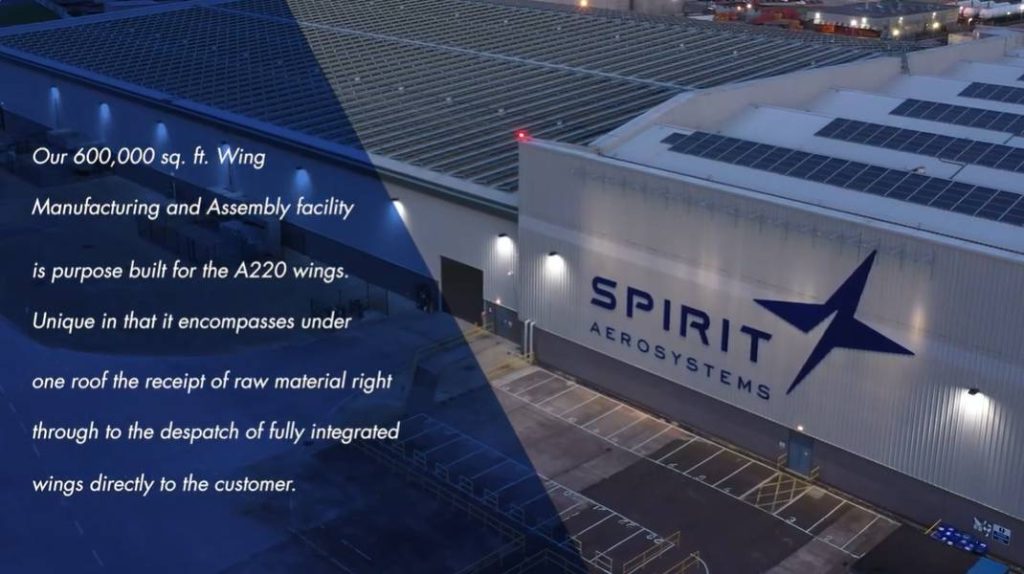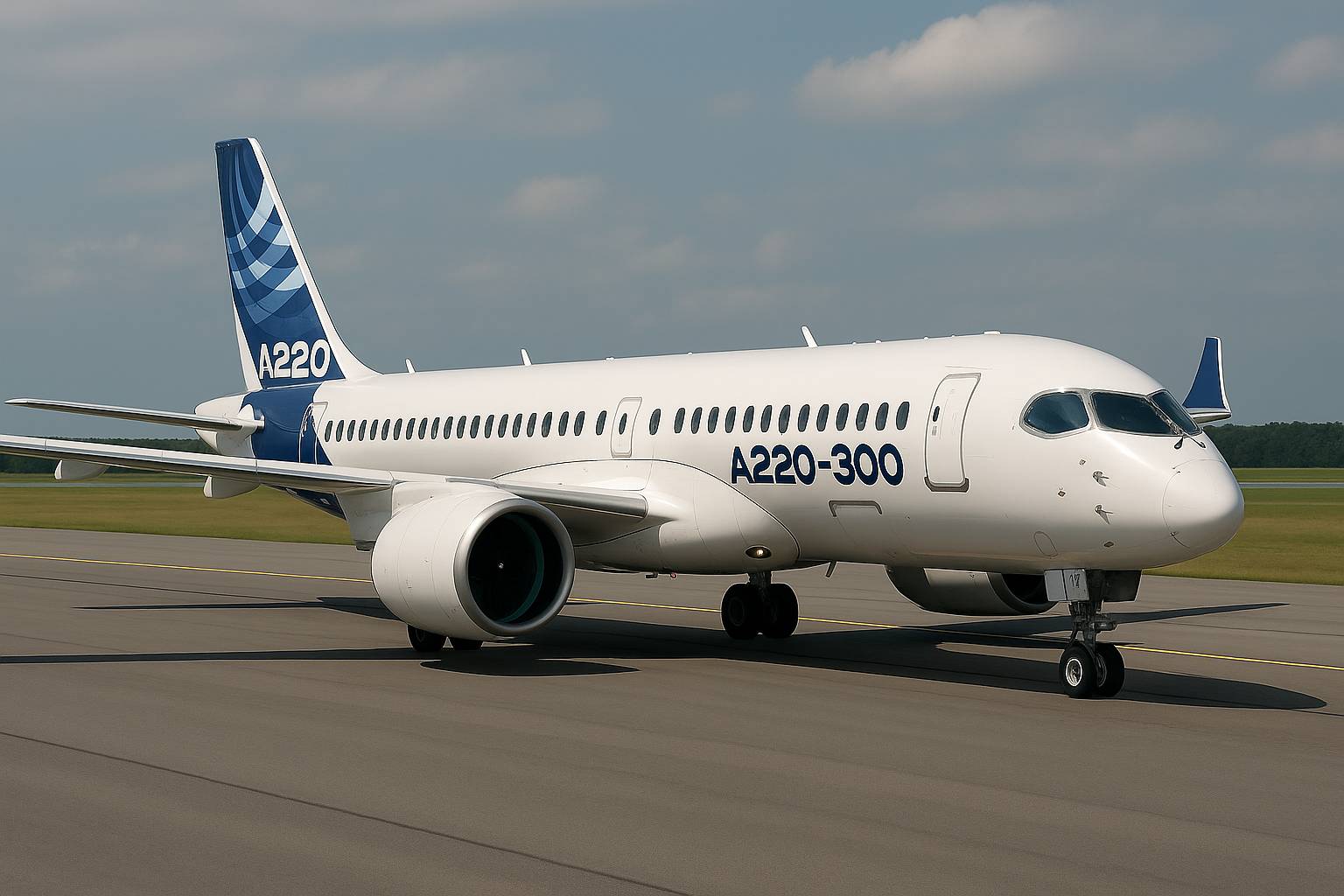Airbus Spirit AeroSystems Deal: A220 Program at the Center of Aerospace Realignment
Shaping the Future of Aerospace — But at What Cost?
Is the global aerospace landscape about to shift dramatically? Airbus, a titan of the aviation world, is finalizing a deal to acquire key facilities from Spirit AeroSystems, a critical supplier for its A220 program. What could this mean for the A220’s future, the workforce, and the aerospace manufacturing ecosystem? While the news largely generates optimism, it also opens new questions about market consolidation and strategic risks.
Having followed the CSeries program closely for Fliegerfaust.com since before its maiden flight over 11 years ago, it remains a great pleasure to continue writing about this remarkable aircraft. Today, it is known as the Airbus A220.. Covering its journey for over a decade has been both a passion and a privilege.
Let’s dive into what could become one of the most consequential moves in recent aerospace history.
Airbus Spirit AeroSystems Deal: A Strategic Move Years in the Making
The Airbus Spirit AeroSystems deal didn’t materialize overnight. Spirit, a former Boeing subsidiary, has long been one of the world’s largest non-OEM aerospace manufacturers. The company’s Belfast operations, employing around 3,500 people, produce the A220’s advanced composite wings and mid-fuselage sections—components vital to Airbus’s growing narrowbody fleet.
Explore further: Airbus’s Foldable Wing Design
As part of a broader reorganization, Boeing is expected to reacquire much of Spirit’s U.S. operations, while Airbus takes over the Belfast and Casablanca sites, as first reported by Financial Times and FlightGlobal.
Financial Times: “Airbus closes in on Spirit deal”
https://www.ft.com/content/a9a9a5a0-2818-4dac-bc8d-8206071edd2c
FlightGlobal: “Path for UK plants unclear as Airbus and Boeing prepare to divide Spirit”
https://www.flightglobal.com/aerospace/path-for-uk-plants-unclear-as-airbus-and-boeing-prepare-to-divide-spirit/162732.article
Spirit’s focus on Boeing programs had previously created tensions around its Airbus work, prompting executives to seek a realignment. Now, Airbus sees an opportunity to secure critical supply lines and boost production resilience for the A220. The company fully took over the program from Bombardier in 2020 (then known as the CSeries).
Why the A220 Matters More Than Ever
The A220 has become increasingly vital to Airbus’s commercial strategy. A clean-sheet design optimized for 100–150 seat segments, the A220 fills a niche between smaller regional jets and the ubiquitous A320 family.
According to Airbus projections:
- 7,000 new aircraft will be needed in the 100–150 seat category by 2042.
- The A220 family commands a 50% market share in that category today.
The aircraft boasts an impressive 25% lower fuel burn compared to older-generation models, making it extremely attractive for airlines aiming to meet stricter sustainability targets.
Learn more: Airbus’s Non-CO2 Emissions Impact Study
Securing the Spirit Belfast facility will allow Airbus to ensure the A220’s ambitious production ramp-up—aiming for 14 aircraft per month by 2026—remains on track despite persistent supply chain challenges.
Related read: The Real Impact of Trade Battles on Airbus
Financial Details Behind the Airbus Spirit AeroSystems Deal
While Airbus has not publicly disclosed the exact price of the facilities, analysts estimate the value could range between $600 million and $1 billion. Boeing’s reacquisition of Spirit’s U.S. assets is expected to be even larger, positioning both OEMs to better control their critical production networks.

According to Reuters, Airbus’s share of Spirit AeroSystems’ revenue rose from 10% in 2019 to nearly 25% by 2024, underlining the growing interdependency.
Reuters: “Airbus CEO says Spirit Aero talks going well but industrial challenges lie ahead”
https://www.reuters.com/business/aerospace-defense/airbus-ceo-says-spirit-aero-talks-going-well-industrial-challenges-lie-ahead-2024-11-19/
Challenges and Opportunities: Union Concerns and Political Reactions
Although the deal is being hailed as a masterstroke by Airbus leadership, it has stirred anxiety among labor unions and political representatives in Northern Ireland.
Approximately 60% of Spirit’s Belfast workforce are not directly tied to the A220 program. The uncertainty around their future—whether Airbus will keep, sell, or restructure other parts of the operation—has raised fears of potential layoffs or job displacement.
Sharon Graham, General Secretary of Unite the Union, stated:
“Airbus must guarantee that no workers are left behind. This acquisition should be a springboard for growth, not a pretext for cuts.”
Meanwhile, the UK government has expressed cautious support, hinting at potential funding packages to modernize the Belfast facility and safeguard jobs.
Related article: Canada’s Controversial F-35 Cancellation
Broader Industry Implications of the Airbus Spirit AeroSystems Deal
If completed, this deal would underscore a larger trend: vertical integration. Airbus, like Boeing, is increasingly moving to control its supply chain more directly.
Benefits of vertical integration include:
- More stable production rates
- Reduced supplier risk
- Better margin control
- Enhanced quality oversight
However, risks are real too. By absorbing manufacturing capabilities, Airbus also inherits exposure to labor disputes, production bottlenecks, and long-term investment commitments in an uncertain demand environment.
Richard Aboulafia, Managing Director at AeroDynamic Advisory, commented:
“This is a logical step but carries risk. Suppliers have traditionally absorbed a lot of turbulence for OEMs. Owning them means owning that turbulence.”
Also read: Market Panic: U.S. Tariffs Hit Aerospace Hard
Competitive Dynamics: Pressure on Boeing and Embraer
Airbus’s move comes at a time when Boeing struggles to recover from multiple crises, including the 737 MAX disasters and recent 787 quality issues. Boeing’s own reacquisition of Spirit’s U.S. facilities signals a desire to reassert control, but the company’s ability to execute remains under question.
Read this: China’s Ban on Boeing Deliveries
Meanwhile, Brazilian manufacturer Embraer is pushing to expand its E2 jet series, directly competing against the A220 in certain markets. A more integrated Airbus could make life harder for Embraer as well, further tightening the battle for regional and lower narrowbody market dominance.
A220 Production: Current Status and Future Goals
As of early 2025, Airbus operates two main A220 final assembly lines:
- Mirabel, Quebec (legacy Bombardier CSeries and CRJ site)
- Mobile, Alabama (newer facility to serve U.S. customers)
Combined, these lines currently produce about 7 aircraft per month.
Airbus’s goal:
- 14 per month by 2026
- Long-term ambition of 20+ per month post-2030
Airbus opened a new Delivery Center in Mirabel in April 2025, designed to streamline handovers and increase efficiency, showing its full commitment to scaling up A220 deliveries.
How Will Customers Be Affected?
For airlines like Delta, Air Canada, Swiss, and newcomers like Breeze Airways, the acquisition could mean:
- Better delivery schedules
- Higher quality assurance
- Greater production transparency
However, the transitional phase might create temporary disruptions as operations are integrated and restructured.
Airbus Leadership: Vision for the Future
Guillaume Faury, CEO of Airbus, emphasized during a press conference:
“We are securing the backbone of the A220. Our commitment to Belfast and the workforce is strong. The A220’s best days are ahead of it.”
Dominik Asam, Airbus CFO, highlighted that this move fits perfectly within Airbus’s broader goal of boosting profitability and maintaining supply chain resilience amid global uncertainties.
Securing the Future or Risking Too Much?
Overall, the Airbus Spirit AeroSystems deal appears overwhelmingly positive—a smart, strategic play to protect one of Airbus’s most promising programs.
However, there are critical questions to ponder:
- Is vertical integration truly sustainable in the volatile aviation sector?
- Can Airbus manage complex manufacturing operations without diluting its focus?
- What happens to workers not directly tied to the A220 program?
- Will this consolidation trigger further industry realignments, possibly reducing competition and innovation?
While Airbus celebrates the expansion of its industrial footprint, the aerospace community must watch closely to see if this bold move ultimately strengthens or burdens the world’s largest plane maker.
The sky seems clear for now, but turbulence may lie ahead.
After covering the A220’s journey from its early CSeries days, it’s thrilling to see its future unfolding even brighter — turbulence ahead or not.
Watch: Take a closer look inside Spirit AeroSystems’ Belfast facility — originally built by Bombardier — now purpose-built for the Airbus A220 wing manufacturing program.

